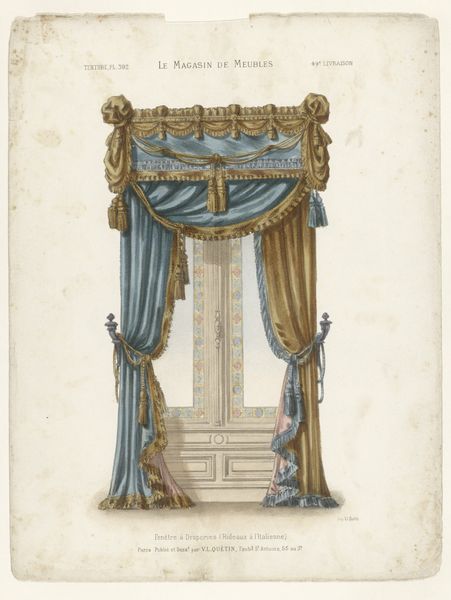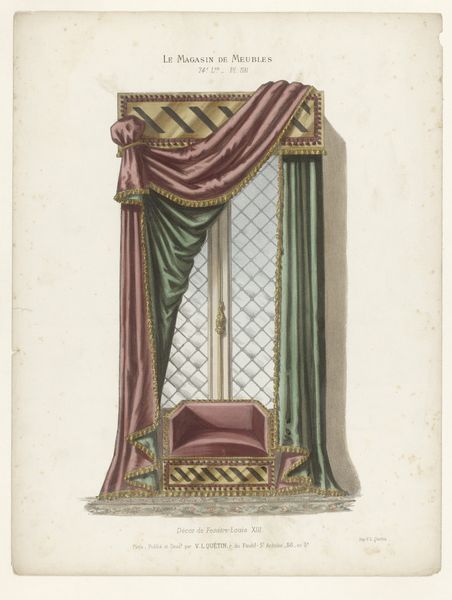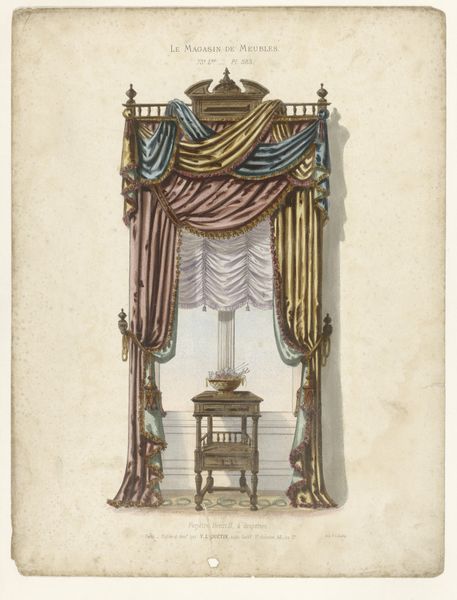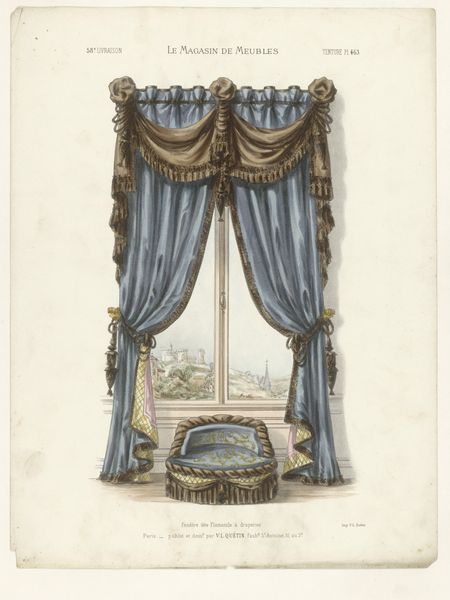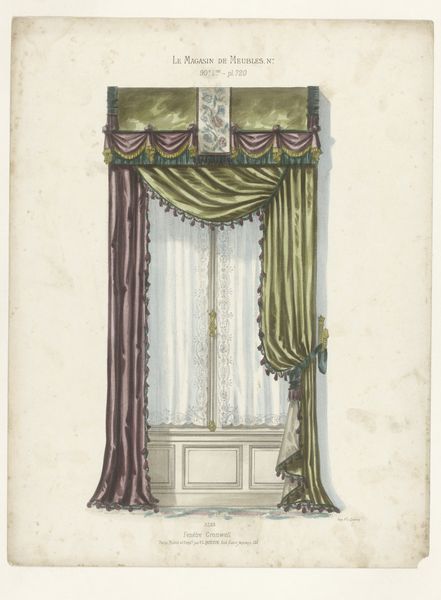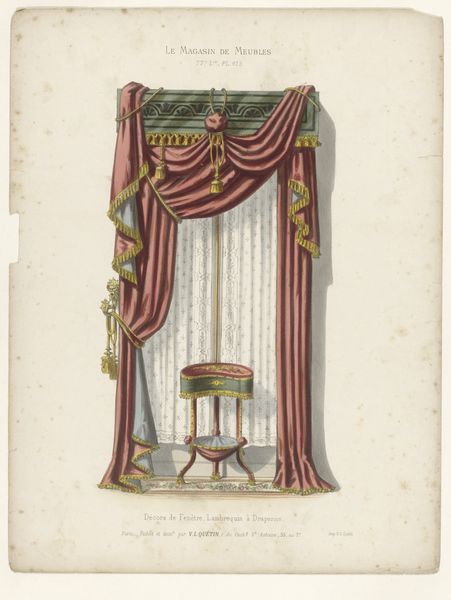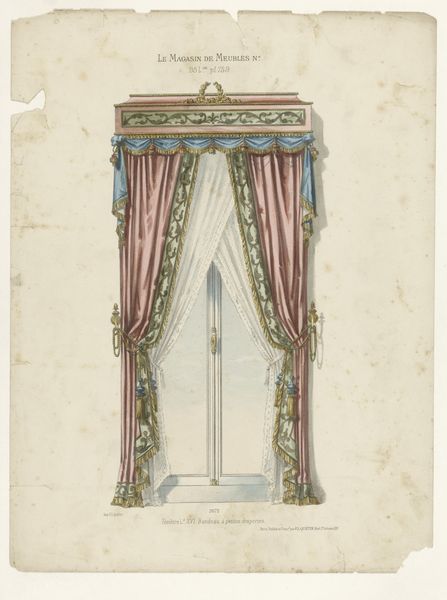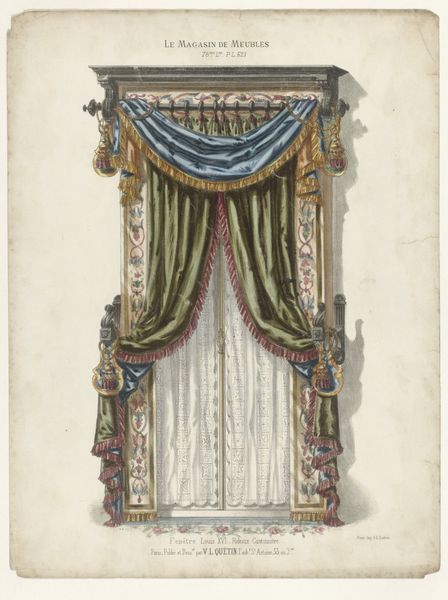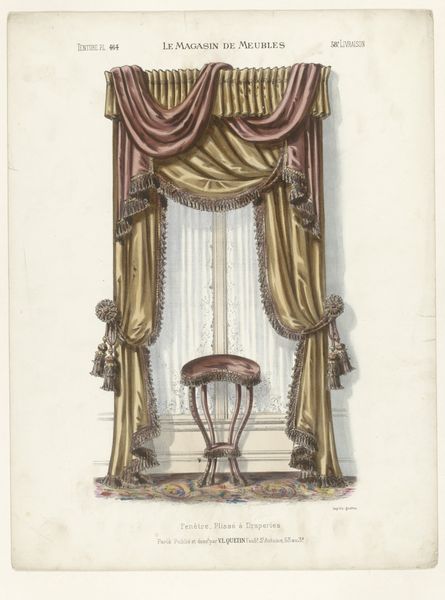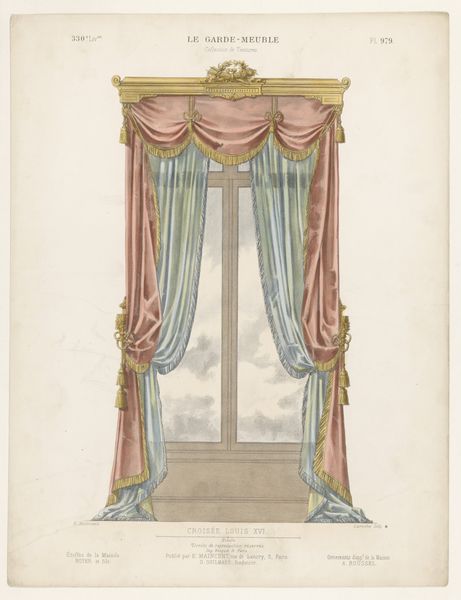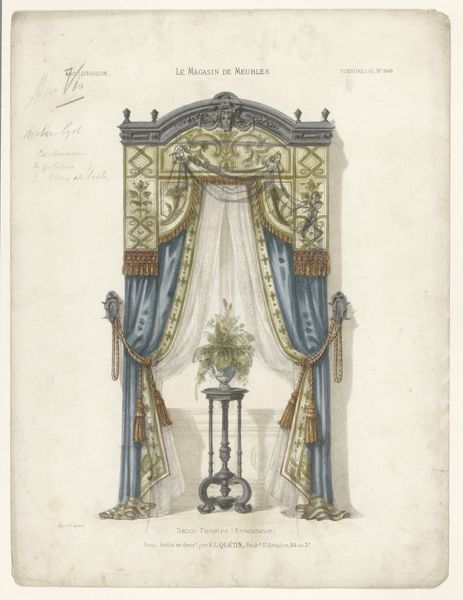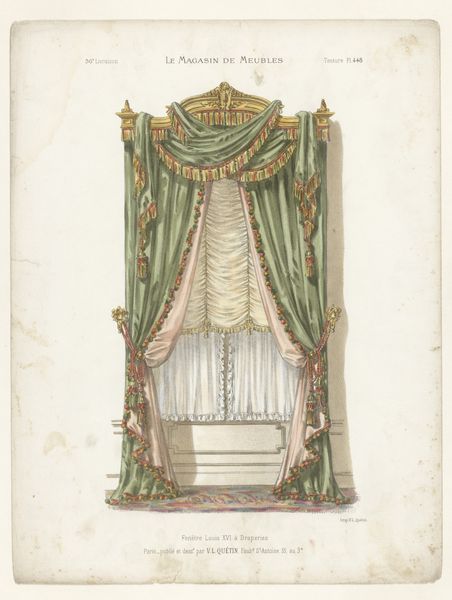
Dimensions: height 357 mm, width 280 mm
Copyright: Rijks Museum: Open Domain
Editor: Here we have "Venster met gordijnen," which translates to "Window with Curtains," dating from after 1878. It's rendered in watercolor, colored pencil, and print. It strikes me as an interesting presentation of bourgeois life. How do you interpret this image? Curator: Well, seeing this through an activist lens, I'm immediately drawn to thinking about the socio-economic context of late 19th-century Europe. This isn't just a pretty picture of a window, it’s a carefully constructed presentation of status and power. What does it mean to display such opulence in a time of significant social upheaval and class division? Editor: That's an interesting point! I hadn't really considered the class implications. I was mostly just focusing on the colours and decorative style. Curator: Exactly, the 'decorative arts' often belie deeper narratives. Neoclassicism, although seemingly obsessed with antiquity, was also used by the elites to reinforce ideas of order, control and good taste – ideas inherently exclusive. How does the idea of “good taste” reinforce social hierarchies? Editor: So you're saying that the aesthetic choices were tied to political messages about who belongs and who doesn't? Curator: Precisely! Notice how the title of the work itself suggests that this watercolor rendering was a catalog page: *Le Magasin de Meubles*. What does the distribution of this printed page mean for the aspirations of the consumer and the commercial possibilities available at the time? It's an image of aspirational living aimed towards those with enough purchasing power to participate in that market. It reveals so much more about consumerism, social mobility, and inequality. Editor: I never would have looked at it that way! Thanks, I now have a new perspective. Curator: And I see in your fresh eyes a reason to continue to pose important questions about the legacies of decorative arts, long left unquestioned in museums today!
Comments
No comments
Be the first to comment and join the conversation on the ultimate creative platform.
